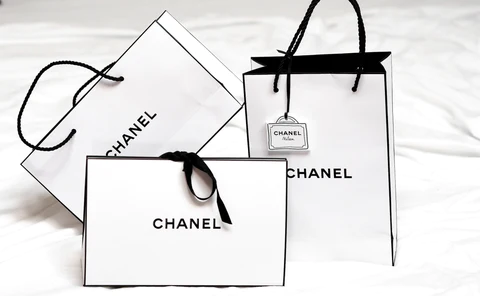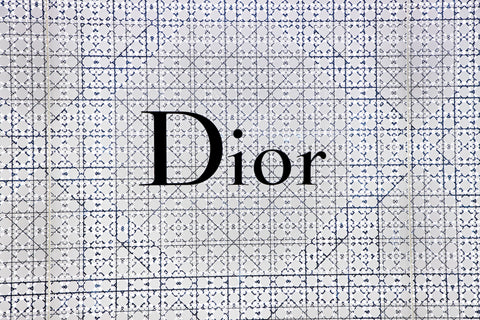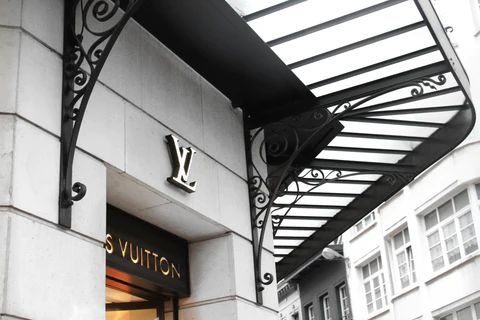How Has French Fashion Influenced the World?

French fashion has been a source of inspiration for the world since the 17th century. Known for its classic and timeless style, French fashion is renowned for its elegance and sophistication. From haute couture to ready-to-wear collections, French designers have been leading trends in fashion for centuries.
The term ‘haute couture’ was coined by Charles Frederick Worth, an Englishman who moved to Paris in 1845 and opened a dressmaking business that eventually became known as House of Worth. He established himself as one of the first major couturiers, pioneering revolutionary new techniques such as intricate embroidery and fabric manipulation that remain part of today’s high-end fashion designs. His innovative approach helped establish France at the forefront of modern fashion design.
Since then, iconic French brands like Chanel, Dior, and Yves Saint Laurent have gone on to shape global trends with their luxurious garments that combine tradition with innovation. Their designs are characterized by clean lines which flatter the body shape while maintaining modesty – something which sets them apart from other styles around the world. They often make use of quality fabrics like silk or wool to give their pieces an air of luxury without compromising comfort or wearability; many modern interpretations also incorporate daring details such as plunging necklines or thigh splits into otherwise conservative silhouettes.
French influence can be seen throughout contemporary Western culture: whether it’s skinny jeans paired with ballet flats or structured blazers teamed up with statement accessories – you can bet there’s some kind of Gallic influence involved.
The same goes for menswear too – look closely at any well-dressed man walking down the street and chances are he’ll be wearing some kind of piece inspired by French tailoring traditions such as slim-cut trousers teamed up with sharp shirts and jackets featuring narrow lapels – all hallmarks not just chic but effortless styling made famous by generations before him.
A Look at the History of French Fashion: From Louis XIV to the Present Day
The history of French fashion is a long and storied one, beginning with the reign of King Louis XIV in the 17th century. The Sun King’s extravagant wardrobe set the standard for fashionable dress throughout Europe and beyond, as he was known to don elaborate wigs, gowns, and accessories. His influence on courtly attire extended from royal palaces all the way down to everyday folk who sought to emulate his style. This trend of grandeur continued into the 18th century with Marie Antoinette popularizing luxurious fabrics such as silk and velvet along with intricate hairstyles that were often adorned with feathers or jewelry.

As time passed, Paris emerged as a leader in haute couture (high-end clothing). This rise in prominence was due largely to two famous designers: Charles Frederick Worth and Jeanne Paquin. In 1895, Worth opened his own salon on Rue de la Paix where he showcased his designs which included voluminous skirts paired with fitted jackets – an iconic look still seen today – while Paquin pioneered ready-to-wear garments for women by introducing innovative techniques like pleating fabric instead of gathering it at waistlines.
The 1900s saw Paris continue its ascent into becoming an international fashion hub when Coco Chanel opened her first boutique in 1910 – heralding an era of simplicity that rejected ostentatiousness for comfort and practicality. By combining menswear elements such as blazers into her collections she created timeless pieces like little black dresses that are still worn today around the world; while Christian Dior’s “New Look” revolutionized post-war dressing by emphasizing curves through cinched waists and full skirts thus cementing France’s reputation as one of most influential forces within the fashion industry.
Haute Couture: How French Fashion Shows Elevated the Craft to a New Level
Haute couture has become synonymous with the French fashion industry and for good reason. The concept of haute couture was introduced in the mid-1800s as a way to showcase high-end, luxurious designs that blended quality materials and skilled craftsmanship. As an elite form of dressmaking, it quickly rose to prominence within France’s fashion circles.
The turn of the century saw Paris take over as the epicenter for haute couture – in fact many consider it to be the birthplace of modern fashion shows. Innovative designers like Charles Frederick Worth began introducing creative new styles at regular intervals while giving their collections show-stopping names like ‘La Robe de l’Avenir’. Their grand presentations featured models wearing custom creations which soon became famous among European royalty and other high society figures alike.
In 1923, Coco Chanel revolutionized her field by creating garments that catered to everyday life rather than just those on special occasions or formal events. This ushered in a whole new era for haute couture where more practical pieces could also be showcased alongside breathtaking evening gowns during extravagant runway shows filled with hundreds of guests from all walks of life who came out dressed up in their finest outfits just to experience this one-of-a-kind event firsthand. Even today these magnificent spectacles continue to captivate audiences worldwide as they pay homage to classic design traditions while incorporating modern trends into each presentation season after season.
Paris Fashion Week: The Event That Put French Clothing on the Global Stage
Paris Fashion Week is the event that has put French clothing on the global stage. This annual fashion week showcases collections from some of France’s top designers and serves as a platform for them to debut their latest creations to an international audience. From its start in 1973, it has become one of the most prestigious events in the fashion industry and attracts millions of viewers each year.
The garments presented during Paris Fashion Week are often highly sought after by celebrities, influencers, and trendsetters alike; they set trends that trickle down into mainstream consumer culture all over the world. As such, this event is seen as having a major influence on global style trends – not just in France but also far beyond its borders. For example, many luxury brands have incorporated elements of French chic into their designs, while more affordable stores often use simpler silhouettes inspired by classic Parisian looks.
Not only does Paris Fashion Week affect what people wear; but it can also impact how people perceive themselves and others based on clothing choices. By showcasing fashionable items from all over France – from haute couture gowns to everyday streetwear pieces – this event encourages diversity within fashion culture across both gender lines and socioeconomic statuses alike. In this way, it gives everyone access to clothes that make them feel confident about their own personal style without sacrificing quality or comfort levels.
Revolutionizing Fashion: How the French Revolution Changed the Course of Fashion History
The French Revolution of 1789 was one of the most influential events in history, and it revolutionized fashion as well. Prior to the Revolution, France had been under a strict monarchy for centuries and clothing styles were dictated by royal decree. After overthrowing the oppressive monarchy, French citizens embraced their newfound freedom with bold new fashions that celebrated individualism rather than conformity. This included bright colors, daring silhouettes, and fabrics such as cotton or linen instead of expensive silks and velvets. These trends quickly spread across Europe and beyond through travel journals and magazines that showcased the latest Parisian designs.
One example is Madame de Pompadour’s “robe à la française” which featured an open front bodice with a skirt draped over several petticoats – a look that became popular during this period. Her influence was so great that women around the world adopted her style in an effort to emulate her gracefulness.
The rise of streetwear also began during this time thanks to poorer classes who wore simple clothing such as trousers paired with striped jerseys made from wool or cotton fabrics; these eventually evolved into today’s denim jeans we know now.
The industrial revolution further propelled changes in fashion by making mass production possible for large-scale manufacturing companies like Levi Strauss & Co. Whose iconic blue jeans are still beloved today.
Advances in technology allowed textiles to be produced faster than ever before which meant more affordable garments could be sold worldwide – truly democratizing fashion on a global level.
It’s no surprise then why French fashion has had such an enduring impact throughout history – its ability to inspire creative expression while remaining relevant continues even today!
Fashion Icons: How Marie Antoinette and Other French Women Changed the Way We Dress
The way French women dress has been a major influence on the world of fashion since the 1700s. Marie Antoinette, in particular, was renowned for her extravagance and opulence which earned her the nickname ‘the queen of style’. Her wardrobe consisted of luxurious fabrics like silks and brocades, exquisite laces, large panniers (hoop skirts), elaborate hairstyles with flowers and ribbons, and feather-trimmed hats. The grandeur of her garments inspired many women to copy her look – even though they didn’t have access to such expensive materials or custom-made dresses.
Marie Antoinette wasn’t alone in setting trends: Empress Joséphine de Beauharnais was also famous for her signature empire line silhouettes as well as floral prints which are still popular today. Coco Chanel is another iconic figure who revolutionized the world of fashion by introducing comfortable clothing from menswear-inspired pieces to jersey fabric dresses – becoming one of the most influential designers in history. Other female figures like Brigitte Bardot who embraced boho chic helped propel it into mainstream culture during the 1960s whilst Catherine Deneuve brought an air of sophistication with tailored suits and fur coats that remain classic staples today.
From pastels worn by Princess Diana to sleek trouser suits sported by Victoria Beckham; the French style has left an indelible mark on global fashion culture over centuries – inspiring generations around the world to adopt their own versions regardless of age or nationality.

The French Fashion Industry: A Driving Force in the French Economy
The French fashion industry has been a driving force in the nation’s economy for centuries. From renowned couture houses to small independent designers, France has always had a flair for style and an eye for quality. The craftsmanship that goes into creating unique designs is highly regarded across the globe and is often seen as trendsetting among those with discerning taste.
In addition to setting trends in the world of fashion, the French fashion industry also contributes significantly to the country’s GDP. As one of its largest sectors, it employs over 800,000 people throughout all stages of production from conception to retail sales – making it one of France’s biggest employers overall. This sector creates numerous opportunities within other industries such as tourism which further bolsters economic growth by attracting international visitors seeking out luxury items and experiences associated with them.
The impact that French fashion has had on global culture cannot be understated either – whether it’s streetwear inspired by the Parisian subculture or iconic silhouettes such as Louis Vuitton handbags or Yves Saint Laurent suits – these creations have become synonymous with modern luxury style around the world today due largely to their presence in popular culture from movies and TV shows to music videos and even video games.

À La Mode: The Enduring Influence of French Fashion on the Global Fashion Scene
The world of fashion has been shaped by a variety of influences, but few have had the same impact as French fashion. With its chic lines and timeless appeal, it’s no surprise that French style has become an enduring staple in the global wardrobe.
From classic pieces to modern trends, France’s influence can be seen across all types of clothing from haute couture to streetwear.
One way in which French fashion continues to shape global trends is through its iconic silhouettes. Asymmetrical cuts and sleek lines are among some of the most popular looks for both men and women around the world today – a nod to their originator in Parisian ateliers. The look is also often characterized by neutral colors such as black or navy blue; simple patterns like stripes or polka dots; and materials like wool tweed or silk chiffon that bring sophistication without being too showy.
Parisian designers have long been known for their willingness to experiment with fabrics and textures – something we still see regularly on runways around the globe today. Whether it’s introducing denim into high-end collections or using bold prints on evening gowns, these daring choices keep us looking forward instead of stuck in one era’s trend cycle forevermore. This spirit of innovation has allowed for many new interpretations of traditional styles as well as entirely original designs inspired by France’s unique approach to fashion design.
Conclusion
French fashion has had an indelible impact on the fashion world, earning a reputation as the fashion capital of the world. From the Baroque period to the present day, French fashion has continued to dominate fashion trends and the textile industry. The works of legendary designers like Hubert de Givenchy, Chanel, and Paul Poiret have left an indelible mark on the industry, influencing dressmakers around the world. The Parisian fashion scene is still a major player in the world of fashion, competing with other fashion capitals like Milan.
The French continue to set the standard for high fashion, and their influence will undoubtedly continue to be felt for years to come. So let us raise a glass to the year 1643 when French fashion began its journey to dominating fashion across the globe.

People Also Ask
How did French fashion become the dominant force in the world of high fashion?
Well, it all started in the early 20th century.
When France became the fashion capital of the world.
The country’s fashion industry began to flourish, and major French fashion houses like Christian Dior, Givenchy, and Paul Poiret gained a reputation for producing some of the most extravagant clothes in the world. The French court also played a significant role in shaping the country’s fashion trends, particularly during Louis XIV’s reign.
What impact did French fashion have on the clothing industry?
French fashion had a significant impact on the clothing industry, particularly in the area of high fashion. The country’s textile trade was well-established, and many French designers became household names around the world. French culture was also a significant influence, particularly in the area of personal expression and individualization. French fashion houses like Chanel’s and Poiret’s helped to shape the industry in the late 20th century, while new designers continued to emerge with fresh clothing designs and luxury goods.
How did the Second World War affect French fashion?
The Second World War had a profound impact on the French fashion industry, particularly due to the shortage of resources during the war. The industry had to adapt to rationing and other restrictions, which made it difficult for fashion designers to produce the same level of extravagance and luxury that they had become known for. Despite this setback, French fashion continued to dominate the fashion world, and American designers even looked to French designers for inspiration. French fashion accessories, such as the cockade, and clothing designs like harem pants and Breton stripes, continued to influence youth culture and personal expression for many years to come.

